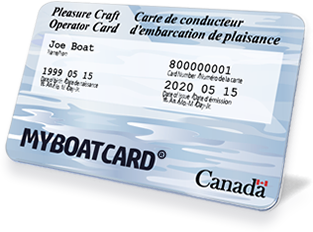Safe Speed
 Collision Regulation (Rule 6) states that all boaters must operate at a safe speed at all times in order to avoid collision and/or adversely affecting any other vessel (i.e. dredging, towing, kayaking etc.).
Collision Regulation (Rule 6) states that all boaters must operate at a safe speed at all times in order to avoid collision and/or adversely affecting any other vessel (i.e. dredging, towing, kayaking etc.).
A safe speed is a speed that allows the operator enough time to take proper and effective action to avoid a collision. The faster a boat travels, the greater the distance required for it to stop, and the less time available for the operator to react to a change in conditions.
Be very careful when boating where visibility is poor, such as when entering or exiting a fog bank.
According to the Collision Regulations, to determine the safe speed for your vessel, you should take into account all of the following factors:
- Your ability to see ahead – slow is the only safe speed in fog, mist, rain and darkness;
- Current, wind, and water conditions;
- How quickly your boat can change direction;
- How many and what types of vessels are near you; and
- The presence of navigational hazards such as rocks and tree stumps.
REMEMBER: All boats must be operated at a safe speed at all times in order to avoid collision.

